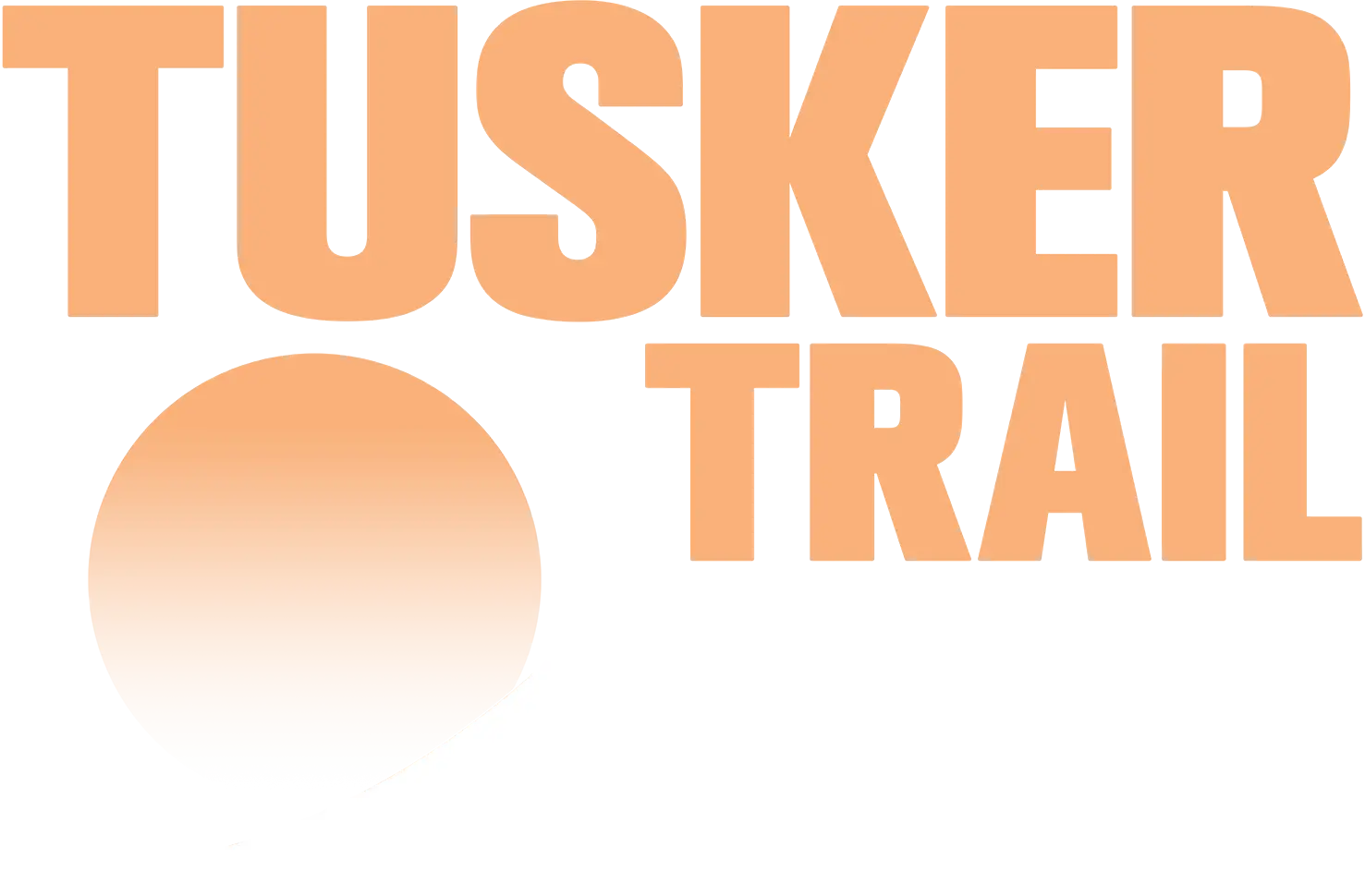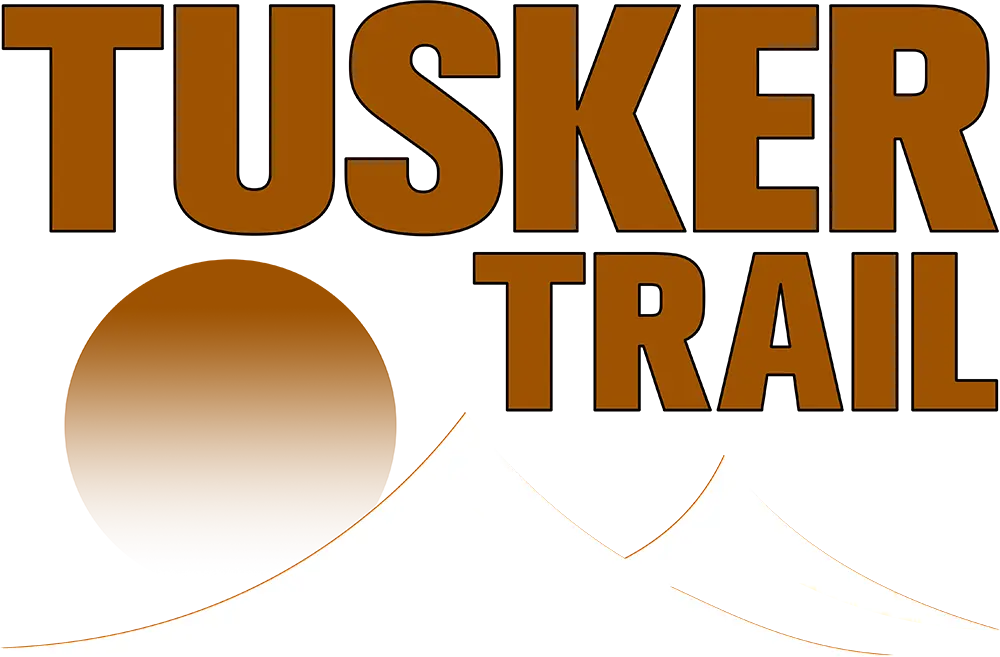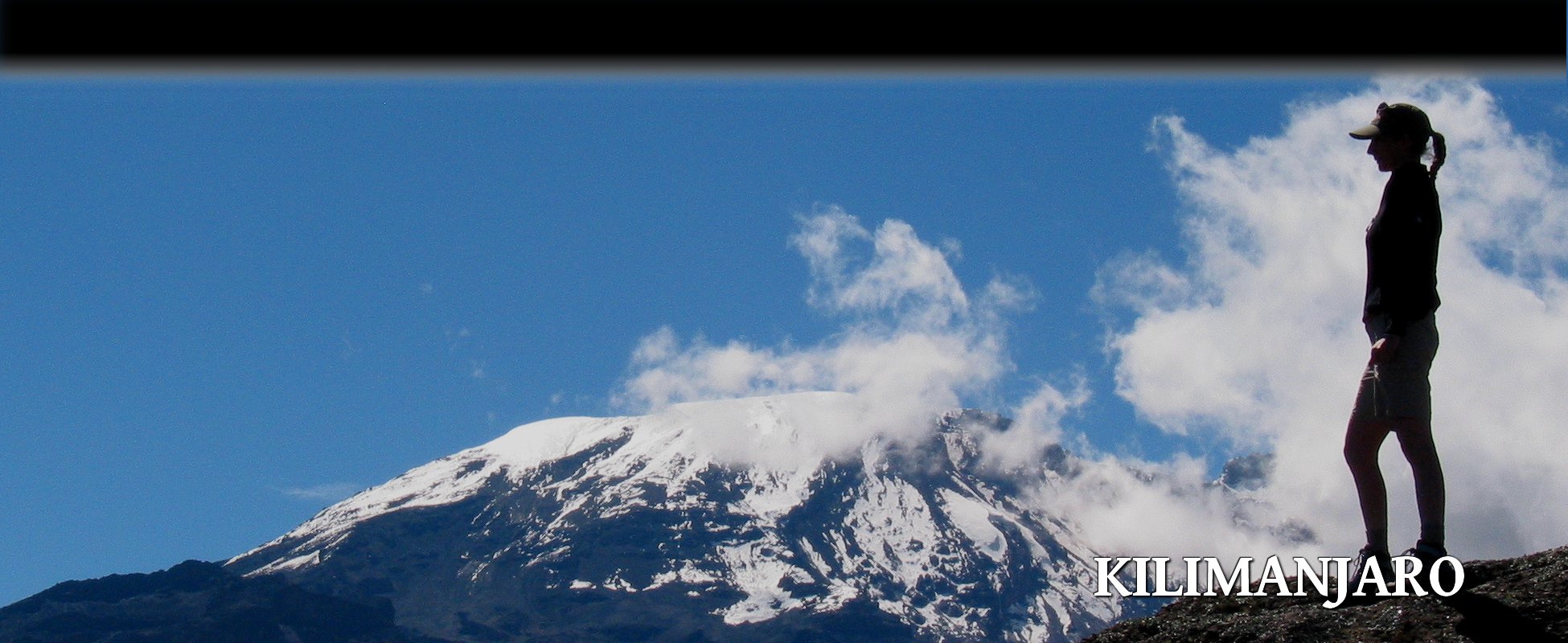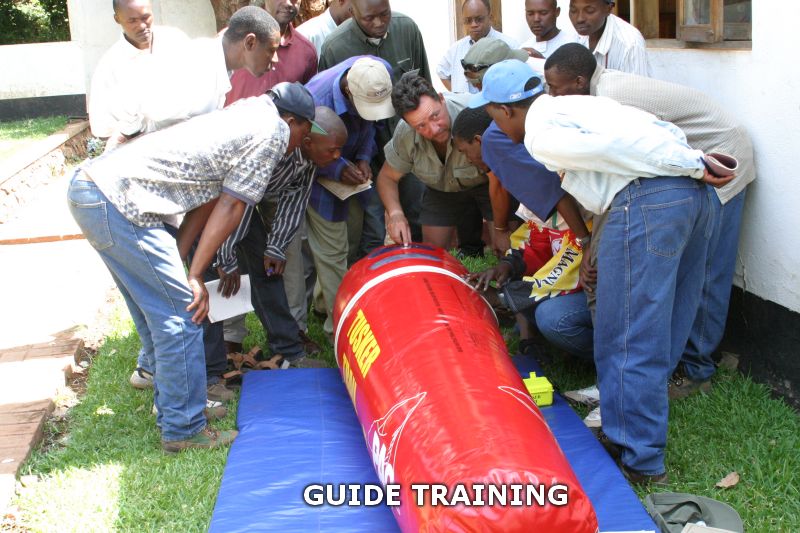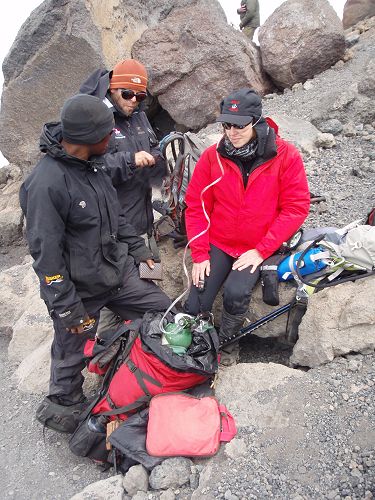All iconic mountains come with their own mythology, but the Kilimanjaro myth can be lethal. We’re not trying to scare you, we love this place and want to share this love, but we need to inform you of its risks. We have more than an abiding respect for its dangers and go to great lengths to get you to the summit healthy.
At 19, 341 feet Kilimanjaro is the highest mountain in Africa and that alone should send a message to anyone considering climbing it. At that elevation the air is so thin that unless you’ve got Nepali Sherpa lungs and blood you will be affected. But Kilimanjaro is also one of the few mountains on the world’s seven summit circuit (Everest, Denali Etc) that doesn’t require any technical mountaineering proficiency. This attracts bucket listers of all sizes and fitness levels who think it’s safe and easy. Some show up in Tanzania with little or no respect for Kilimanjaro’s physicality and dangers. Big mistake.
You need to be very serious about attempting a summit climb because here’s the sobering reality— trekkers die every year attempting to climb Kilimanjaro. Most of these tourist fatalities occur because of altitude sickness and many of these fatalities could be avoided.
More than a first responder
Tusker founding guide Eddie Frank saw early on in his Kilimanjaro career that if he was to take clients safely to the Kibo Summit he and his guides had to be more than wilderness first responders.
“The Wilderness First Responder course I took in the 1990’s and later spent five days teaching about treating backcountry medical situations, but only two hours about high altitude issues. This was too generic when it came to altitude so I designed a course for guides that flipped the first responder course and spends five days dealing with high altitude issues in our annual training sessions for our guides. I now have confidence that our guides can lead trips in high mountains all over the world that aren’t technical climbs.”
The first big danger on Kilimanjaro is failing to acclimatize and continuing to climb higher in spite of the symptoms you feel. The second big danger is that most local guides let you. Your guides haven’t recognized early onset of Altitude Mountain Sickness whose symptoms include nausea and dizziness. Any respectable company monitors their climbers continuously to see how they are adjusting to the ever thinning air.
Climbing higher with AMS can lead to worsening high altitude problems that include High Altitude Pulmonary Edema (HAPE) and High Altitude Cerebral Edema (HACE). And you can die from both.
HAPE occurs when fluid builds in your lungs and is more common in young fit climbers. HACE occurs when the brain swells because of excess fluid. Both are deadly and require immediate descent or a helicopter evacuation to a hospital at Kilimanjaro’s base. A helicopter Evac on Kilimanjaro can cost a client a minimum of $2000, but all Tusker clients already have an evacuation policy which they are required to have.
Eddie said that Tusker’s Kilimanjaro guides can mitigate some of these issues, but don’t allow clients to continue upward unless they are adjusting to the altitude well.
Unfortunately many of the hundreds of companies operating on Kilimanjaro don’t have guides who can monitor their clients, don’t carry oxygen, or hyperbaric chambers for emergencies. This equipment is standard on any Tusker climb and is not cheap to acquire and maintain. A portable hyperbaric chamber alone costs $4,000. Tusker carries one on every climb.
Reducing risk, increasing summit success
The biggest question when it comes to Kilimanjaro safety is; do you want to save money to compromise safety? You can climb Kilimanjaro for as little as $1,200, but at what cost to your safety? Kilimanjaro is a metaphor for capitalism run amok on steroids. It’s about supply and demand, and with 50,000 climbers annually there is huge demand, but the supply of adequate safety precautions is low. The climb is practically unregulated when it comes to safety. There is a reason the Tanzanian National Park Service doesn’t reveal annual death totals on Kilimanjaro— it’s bad for business. Estimates by companies and veteran Kilimanjaro climbers put the annual number of deaths between 5-15 with evacuations around 1,000.
The cheapest deals come with the least safety. These itineraries include the Marangu and Machame routes that take six days and have just a 60 percent failure rate. Almost all these climbers suffer from altitude sickness. The longer routes are nine days or more and have much higher success rates because of longer acclimatization.
Tusker offers Kilimanjaro climbs as long as 13 days on the Spiral Route that comes with a 99 percent success rate. Eddie’s bottom line belief is the longer time spent acclimatizing the better chances you will summit and avoid a bout with AMS or worse.
There are perhaps a dozen companies of the hundreds operating on the mountain that have trained guides to monitor and treat you for altitude sickness as well as carrying oxygen. Your chances of a healthy summit trek are substantially higher, but so is the cost of your trip. You pay for what you get, and that’s the security that comes with reducing risk by increasing safety and maximizing your chances of summiting.
Do you want to go with a low budget company that compromises on guide training, equipment and the food they serve? Unless you have to squeeze your Kilimanjaro experience into a six day window it’s not recommendable.
Oxygen fight and fraud above tree line
In Eddie’s 43 years of leading climbs and trips in Tanzania he has seen it all and it’s not always pretty, especially when it comes to safety. Because of Tusker’s reputation for safety, Eddie and his guides are often asked for help with clients from other companies who are struggling. Eddie estimates Tusker does 20 “interventions” annually, but these are not easy decisions.
“I was giving a locker room talk to our climbers the night before we were to summit and I heard something going on outside. I left the group discreetly to check it out and saw a body being carried down the mountain. A guide from that company sought me out and asked if he could borrow one of our oxygen cylinders,” Eddie recalled.
“I found out that their client who had summited, but was left at Stella Point on the descent by mistake. Their guide wanted to have our oxygen to show the National Park Service that they had tried to use oxygen. I didn’t lend them our oxygen, but we did lend a stretcher to get their client down the mountain. I wouldn’t help them with their cover-up of their gross negligence.”
On another occasion an older woman at 15,000 feet hiking with another company was struggling and Eddie lent her oxygen, but then she demanded to keep it with her on the way to the top. Eddie refused and she threatened to report him to park officials. “We needed that oxygen for our own clients. I’m not about to compromise our own climbers’ safety.”
Playing the percentages
Before considering a Kilimanjaro trek you need to do your homework. Do your own deep dive into the hazards that this climb comes with and carefully consider your options. There are basic elements to Kilimanjaro safety surrounding altitude, but you may have other individual concerns, such as frost bite at higher elevations and hypothermia in the rainy season.
Kilimanjaro is dangerous especially if you don’t take a longer route to allow for proper acclimatization and are led by a company that doesn’t take guide training and altitude equipment seriously.
Climbing and summiting Kilimanjaro is a life achievement, but you don’t want to risk your life by making poor choices before you even start the journey. Play the percentages by seeing which companies have the best summit success rates. Ferret out reviews about their medical capabilities. Expect to pay more for a quality safety experience.
Ready to Explore?
Tusker Trail was founded in 1977 with Eddie Frank’s first trans-Africa expedition. Today, 45 years later, Tusker Trail is recognized across the globe as a world class, expedition company with an incredible track record and reputation for training the finest guides on the planet. On Kilimanjaro, Tusker’s mountain guides have earned the nickname “The Lions of the Mountain” by guides from other companies.
Take a look at Tusker’s treks, each a unique experience of some of the most amazing journeys that will challenge you and change your life forever. If you have a question about our treks give us a call +1.775.833.9700 or 1.800.231.1919 and if you talk to Eddie Frank be sure to ask him about the bet he made 45 years ago that sent him on that first expedition across Africa.
TUSKER TRAIL TREKS
Kilimanjaro Climb – (Tanzania)
Everest Base Camp Trek – (Nepal)
Greenland Fjords Trek – (Greenland)
Greenland Dog Sledding Expedition – (Greenland)
Mongolia Nomad Trek – (Mongolia) – “Trip of the Year Award: Outside Magazine”
